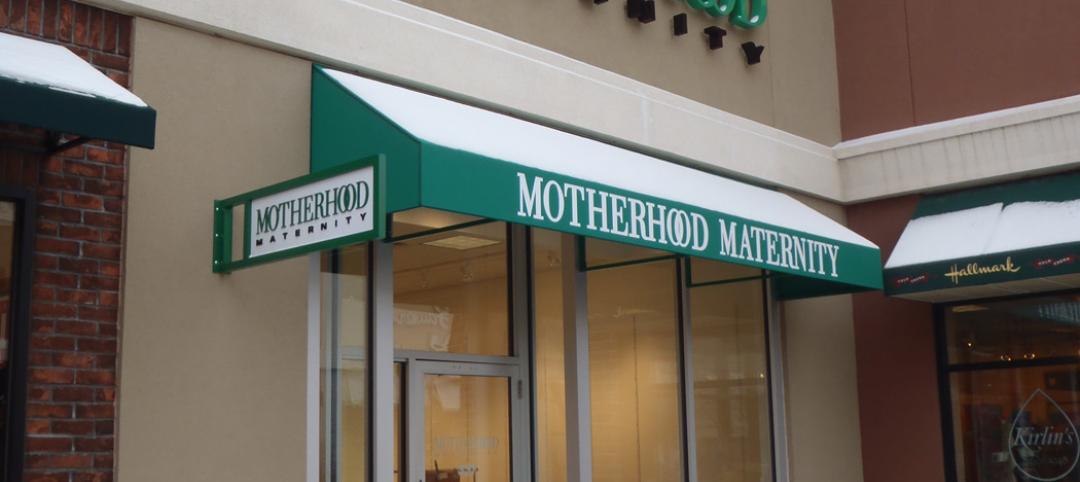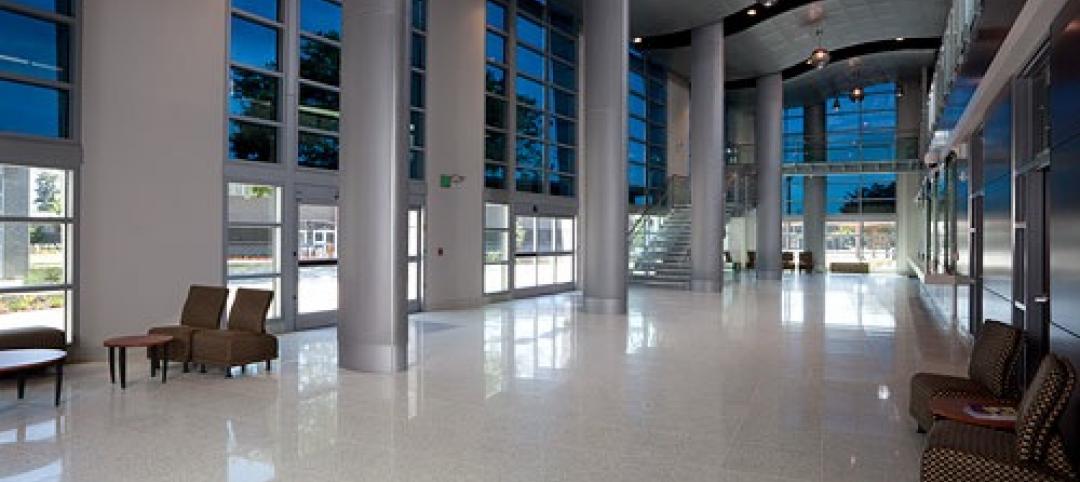Beyond the door material, another important decision is determining whether a more sophisticated door system is required for the application. In the MasterFormat section 08 30 00, Specialty Doors and Frames, a number of door types are listed for special functions, access locations, sliding and folding hardware, and even pressure-resistant types. Among these, there are several mentioned by Building Teams for consideration today:
• Pivoted or hinged doors. Both pivots and hinges can be used interchangeably, although hinged, prefabricated doors are generally less expensive. The presentation of the door types is the key factor. A hinged door typically reveals a knuckle spanning 4½ inches, while a pivot door’s profile is much smaller, with a 1½-inch knuckle. (Means Illustrated Construction Dictionary defines a door knuckle as “one of the enlarged, protruding, cylindrical parts of a hinge through which the pin is inserted.) The pivot door also offers a higher level of durability, making it a common choice for commercial applications.
• Balanced doors. Ideal for windy climates, a balanced door is a more sophisticated, engineered system for exterior entrances. “The balanced door system is a complete assembly where the hanging and closing of the door is controlled by the door system, negating some of the effects of excessive wind conditions,” says Jim Berg, a veteran door systems consultant.
If a balanced door isn’t in the budget, then pivoted or hinged doors need to be designed with higher opening and closing forces, as more of the door leaf is exposed to the wind.
• Automatic and revolving doors. Automatic doors are commonly used to meet the requirements of the Americans with Disabilities Act, or simply to handle highly trafficked entrances, as in hospitals and grocery stores. Because the price difference between automatic and revolving doors is substantial, revolving doors are usually reserved for buildings with significant weather requirements.
Revolving doors can also be helpful in mitigating the effects of strong negative and positive air pressures created by the HVAC systems and outdoor conditions, which cause wear and tear to a typical door. Consequently, the number of service calls is reduced with revolving or vestibule door systems.
According to Studio 08 Principal Rick Lewis, the most common type of revolving door is the single-post door. However, “Many of the airports are now using a type that allows more people to be in the door unit at one time, to move more traffic,” he says. Today there are small, three- and four-wing models for lower-traffic applications, while the large, two-wing or three-wing automatic revolving doors are more common in retail centers, hospitals, and transportation centers.
In most applications, a low-energy power operator meeting ANSI A156.19 (Standard for Power Assist and Low Energy Power Operated Doors) is specified as an ADA-compliant installation. However, for industrial settings, a heavy-duty power operator compliant with ANSI A156.10 (American National Standard for Power Operated Pedestrian Doors) is used. The industrial types are often specified with a ramp and guides, as the doors generally don’t stop and reset if a person or object enters the sensory field.
While the lower energy operators do stop and reset, this action can eventually wear down the mechanism. “Currently, manufactured units are considerably better than the ones that first came out 20 years ago,” says Lewis. “However, an ANSI A156.10 unit requires a lot of maintenance because the door operator is used each time a person, cart, or motorized vehicle passes through the opening.” Lewis says there is considerable power and momentum in the door as an operator is functioning, and “this causes not only the operators to receive a lot of abuse, but also the doors and frames.”
While retrofitting ordinary doors into automatic doors can be difficult and expensive, there are cases where there is no way around the problem for certain types of buildings, such as churches, temples, mosques, and other religious institutions, which are now required by ADA standards to update their access points. +
Related Stories
| Feb 15, 2012
Code allowance offers retailers and commercial building owners increased energy savings and reduced construction costs
Specifying air curtains as energy-saving, cost-cutting alternatives to vestibules in 3,000-square-foot buildings and larger has been a recent trend among consulting engineers and architects.
| Feb 15, 2012
Englewood Construction announces new projects with Destination Maternity, American Girl
Englewood’s newest project for Wisconsin-based doll retailer American Girl, the company will combine four vacant storefronts into one large 15,000 square-foot retail space for American Girl.
| Feb 14, 2012
Angelo State University opens doors to new recreation center expansion
Designed by SmithGroup, the JJR_Center for Human Performance offers enhanced fitness options, dynamic gathering space.
| Feb 14, 2012
SAIC selected for architectural and engineering design services at Lajes Field, Azores
SAIC’s services will include a broad variety of new construction projects and maintenance and repair projects
| Feb 14, 2012
Skanska promotes Aparicio and hires Leintz in Southern California
Aparicio and Leintz are both based in Skanska’s Los Angeles office.
| Feb 14, 2012
The Jackson Laboratory announces Gilbane Building Co. as program manager for Connecticut facility
Gilbane to manage program for new genomic medicine facility that will create 300 jobs in Connecticut.
| Feb 14, 2012
Thornton Tomasetti names Al Hashimi vice president for its Middle East Operations
Al Hashimi is joining the company to help expand Thornton Tomasetti’s business in the region and support clients locally.
| Feb 13, 2012
WHR Architects renovation of Morristown Memorial Hospital Simon Level 5 awarded LEED Gold
Located in the Simon Building, which serves as the main entrance leading into the Morristown Memorial Hospital campus, the project comprises three patient room wings connected by a centralized nursing station and elevator lobby.
| Feb 13, 2012
Center for Sustainable Building Research launches CommercialWindows.org
Resource aims at reducing commercial operating costs and energy consumption.
| Feb 13, 2012
New medical city unveiled in Abu Dhabi
SOM’s design for the 838-bed, three-million-square foot complex creates a new standard for medical care in the region.

















